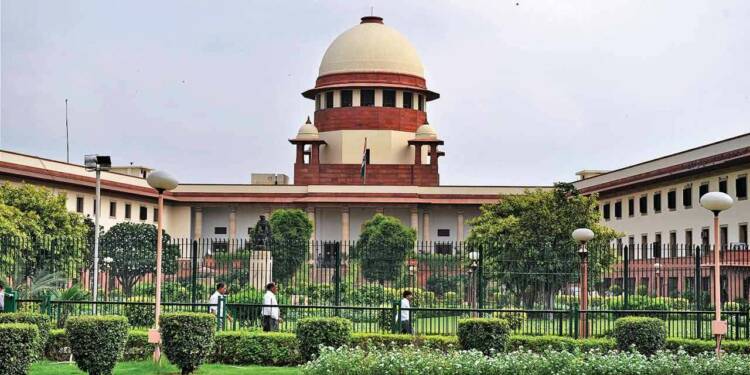A special bench of India’s apex court has raised a very big issue- appointment of a female Chief Justice of India. In over seven decades of Supreme Court’s history, no woman has been appointed as the Chief Justice of India to lead the Indian judiciary.
A three-judges bench comprising Chief Justice SA Bobde and Justices Sanjay Kishan Kaul and Surya Kant noted, “Why higher judiciary. We think time has come when a woman should be Chief Justice of India.”
The Chief Justice of India also pointed out the challenges and difficulties faced in appointing female judges in the higher judiciary, that is, the High Courts and the Supreme Court. He said, “Chief Justices of High Courts have told me that there is a problem that when women lawyers are asked for appointment as judges, they often deny it saying that they have domestic responsibility or they have to take care of the studies of their children”.
The apex court has a long list of 48 CJIs, including the CJI designate NV Ramana, ever since it came into existence on January 26, 1950. Yet, due to the socio-economic conditions of the nation, not enough women have got elevated as judges to the High Courts and the Supreme Court, and certainly no woman judge has been able to enjoy a sufficiently long tenure at the apex court to get appointed as the Chief Justice of India. As a general rule, the seniormost Supreme Court Judge is appointed as the CJI, and therefore a Supreme Court Judge needs a considerable number of years in service to attain requisite seniority. In fact, till now only eight women have been appointed as Supreme Court judges.
Simply put, the nation needs some protective discrimination or affirmative action in favour of women, if it has to have a woman CJI in the near future. The Constitution itself enables the State to make such special provisions in favour of women. And if there is a case of lack of female representation in the higher judiciary, the State actually becomes obligated to create more space for women lawyers in the top echelons of the system.
So, what stops us from making such provisions facilitating quick elevation of women in the judiciary? The answer lies in the fact that there is no legislation laying down the procedure for appointment of higher judiciary judges. The Constitutional mandate is that the President shall appoint every Judge of the Supreme Court “after consultation with such of the Judges of the Supreme Court and of the High Courts in the States as the President may deem necessary for the purpose.”
But there is no legislation laying down the minute details for higher judiciary appointments. So, till 1993, the the Prime Minister and the Union Law Minister enjoyed extraordinary power in judicial appointments which brought along its own problems like executive’s tendency to suppress unfavourable judges.
Post-1993, higher judiciary judges are being selected by the collegium system. Judges of the Supreme Court are now appointed by the President of India on the recommendation of a collegium headed by the CJI and comprising four of his senior-most colleagues. The collegium is the real judge-maker.
Our limited purpose of examination is that in the last 71 years, which includes 43 years of executive dominance and almost 28 years of collegium system, no woman judge has been able to get appointed as the Chief Justice of India.
Meanwhile, women remain highly underrepresented in higher judiciary. For example, the Supreme Court presently has only 1 woman judge, whereas the sanctioned strength of apex court is 34 judges. This is primarily because in lack of any proper legislation, no welfare provision has been made for quotas or faster elevation of women judges.
If the Parliament creates a proper law governing appointment of higher judiciary judges that also takes care of the Constitutional mandate to hold consultation with the judiciary in appointments, then a path can be paved for quotas and other provisions to hike women representation in the judiciary.
The only means towards the appointment of women judges at the top level is to increase their representation, apart from innovative methods like direct elevation of luminary women lawyers to the top court without a prior elevation at the High Court level.
The nation thus needs a welfare legislation replacing the present collegium system, so as to bring in more women judges and even a woman CJI. The fact that we need more women judges at the top levels needs no emphasis. From the right of women to equal representation notwithstanding societal restrictions to the issue of gender sensitization in the legal system, adequate representation of female judges in the Indian judiciary is an issue that simply cannot wait for too long.































